
You have a big day tomorrow. You’ve been tossing and turning for hours, but you just can’t find a comfy position. We’ve all been there, and we all know that you need to get a good night’s sleep if you’re going to wake up feeling refreshed and ready to face your day.
But, did you know that how you sleep also affects how you feel when you wake up?
That’s right: Similar to what mattress you’re sleeping on, your sleeping position plays a major role in your overall sleep quality. In fact, identifying the best sleeping position for you may have many positive health benefits beyond just getting some good rest.
Our comprehensive guide breaks down all of the most common sleeping positions, including pros and cons of each, and how to determine which one might be best for you!
What Is the Best Sleeping Position?
So, what’s the secret sleeping position that guarantees the best quality sleep you can get?
Unfortunately, there’s no definitive “best” sleeping position. What’s comfortable for one sleeper may be intolerable for another, and sleep experts and researchers remain divided on the topic.
The best sleeping positions, however, should support the natural curves of your neck and spine. According to Kevin Lees, DC of The Joint Chiropractic, the best way to maintain proper spinal alignment is by sleeping on your back or your side.
“When you sleep on your back, you’re halfway to a perfect night’s rest,” says Lees. “Slip a small pillow behind your knees to give them extra support and take the pressure off of your spine, and then you’ve got a real winner in the healthy sleeping position category.”
The Importance of Choosing the Proper Sleeping Position
Obviously, drifting off to dreamland is no easy feat if you’re not comfy, but choosing the best sleeping position goes beyond just personal comfort. Different sleeping positions, provided you ensure proper posture while lying down, pose different benefits to your health and wellness.
For example, a 2025 review published in Musculoskeletal Care1 determined that sleeping on your back or in a supported side-lying position may play a role in alleviating symptoms of low back pain. Another study published in Sleep2 found that regular snorers snored less when sleeping on their sides versus their backs.
Identifying the right sleeping position for you means you’re more likely to wake up feeling fresh, pain-free, and ready to take on your day. Let’s break down your options, pros and cons of each, and other factors to consider when you’re trying out a new sleeping position.
Side Sleeping
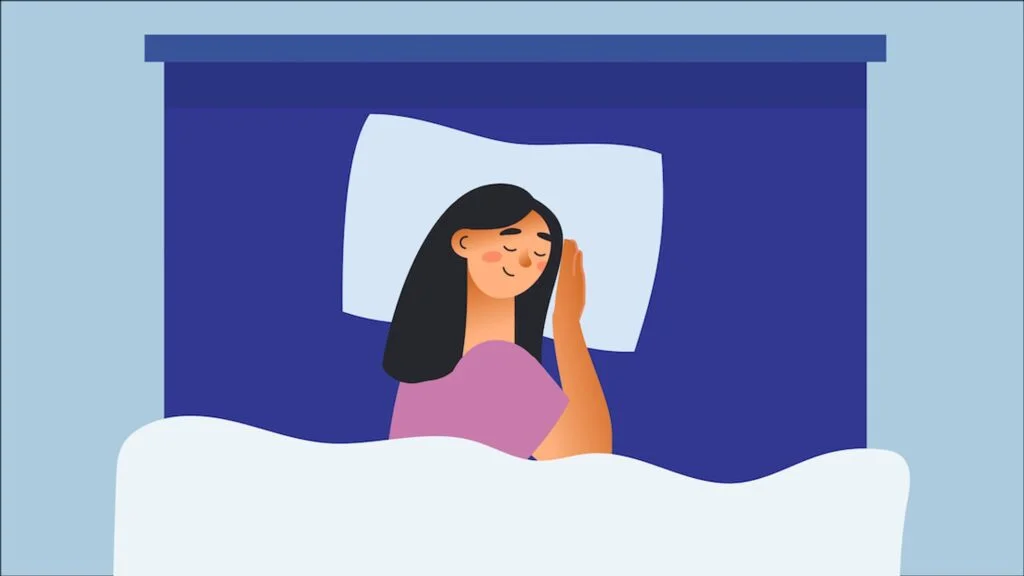
Sleeping on your side is super comfortable and seriously popular, with as much as 60 percent of the population3 reportedly sleeping on their sides each evening. But we don’t consider it one of the best simply because it’s cozy.
Side sleeping lets you maintain a neutral position while you sleep, meaning you’re putting less stress on your head, neck, shoulders, and spine as you snooze. That not only allows you to get more restful sleep, it also means you’re more likely to wake up with less pain and stiffness than usual. Pretty sweet deal, right?
Benefits of Side Sleeping
Rolling onto your side the second you slip into bed feels divine, but there are many benefits you may not realize you get from sleeping on your side.
The side sleeping position promotes proper spinal alignment, which may lessen stress on your back and provide some level of pain relief for individuals with low back pain. It also allows your airways to remain open, which may alleviate breathing problems for some sleepers, and assists in digestion, especially if you’re sleeping on your left side.
Most sleepers can benefit from sleeping on their side, tucking their knees into their chest similar to the fetal position, but a few groups may be especially suited for side sleeping:
- Snorers: Studies show4 that “sleeping on one’s side” may “significantly reduce the frequency of snoring” in regular snorers.
- Pregnant women: According to the Canadian Medical Association Journal5, pregnant patients should be advised to sleep on their sides and avoid sleeping on their backs starting at 28 weeks’ gestation.
- People with acid reflux: A 2023 systematic review in the World Journal of Clinical Cases6 suggests that patients who regularly experience heartburn or suffer from health conditions like gastroesophageal reflux disease (GERD) may reduce nocturnal reflux by sleeping on their left side.
- People with lower back pain: Sleeping on your side promotes proper spinal alignment, reducing undue stress on your head, neck, shoulders, and back, which may provide pain relief to individuals who suffer from chronic lower back pain.
Cons of Side Sleeping
Sleeping on your side is comfortable, offers a variety of benefits to your overall health, and may provide some relief for various health conditions and ailments. It sounds like a dream come true, but are there any downsides to be aware of?
- It may increase your risk of shoulder injury: A 2024 study in Arthroscopy, Sports Medicine, and Rehabilitation7 found that nearly 90 percent of the participants, which consisted of patients suffering from rotator cuff tears, preferred sleeping on their side.
- It may lead to wrinkles: Pressing your face against the pillow may result in vertical wrinkles on your face called “sleep crunch lines,” according to a 2020 study in the Aesthetic Surgery Journal8.
- It may lead to spinal misalignment: Side sleeping is generally good for your back, but sleeping on a mattress that doesn’t properly support the natural curves of your body may lead to neck or back discomfort and contribute to issues over time. So, if you’re regularly sleeping on your side, try also sleeping on one of the best mattresses for side sleepers!
- It’s not comfortable for everyone: Just because it’s good for you doesn’t mean you’re going to like it. I mean, vegetables are good for you too…
How to Sleep on Your Side
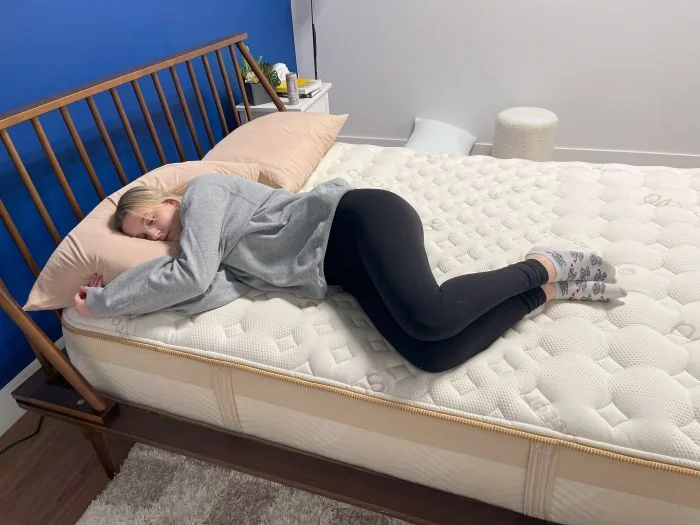


Don’t let that short list of cons dissuade you from trying out what many consider to be the best sleeping position of them all. If you’re committed to giving side sleeping a go, all you must do is climb into bed, tuck yourself in, and roll onto your side.
Here’s a few quick tips on how to assume the position properly and find out if side sleeping is right for you:
- Place a supportive pillow between your knees to reduce extra pressure on the spine and keep your spine, hips, and pelvis in perfect alignment.
- Grab a high-loft pillow that’s designed for side sleepers to provide extra support for your head and neck, which may reduce your risk of neck or shoulder pain.
- Consult your healthcare provider, especially if you are hoping that sleeping on your side may remedy some nagging symptoms you’ve been experiencing. They can provide their professional medical recommendation to truly determine if side sleeping is right for you.
Is it Better to Sleep on Your Left or Right Side?
You’re tossing and turning from your left to your right and back to your left, and you can’t help but wonder if one side is actually preferred when it comes to sleeping on your side. For many, you can sleep on whatever side feels most comfortable.
However, left side sleeping is generally regarded as the better option, especially if you suffer from heartburn, regular acid reflux, or health conditions such as GERD. When you’re on your left side, gravity aids in digestion, keeping everything moving smoothly through your stomach and into your intestinal tract.
On the flipside, right side sleeping or—worse yet—sleeping on your back may hinder digestion for individuals with digestive issues. Stomach acid finds its way into the esophagus, leading to nocturnal reflux and often a very rude awakening.
So, regular folks may feel free to sleep on their left or right side, but individuals suffering with regular reflux, GERD, or other digestive issues may get some relief by lying on their left side.
Sleeping on Your Back
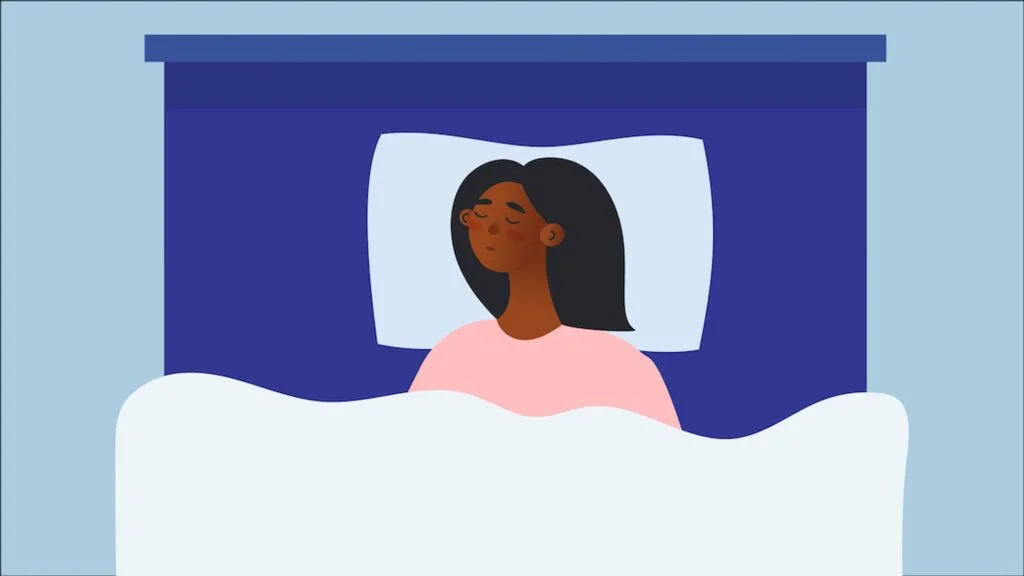
Sleeping on your side is generally regarded as one of the healthiest sleeping positions, but back sleeping ranks as the second most popular sleep position with nearly 40 percent of sleepers9 catching Zzzs from the supine position each night.
Benefits of Sleeping on Your Back
According to Lees, sleeping on your back is a slam dunk in terms of spinal health because it lets your head, neck, and spine rest comfortably in a neutral position and distribute weight evenly, so you don’t develop painful pressure points. That means you’ll stave off aches and pains, promote restful sleep, and enjoy some level of back pain relief simply by sleeping supine.
“It may also be beneficial for tension headaches and gastric reflux,” Lees adds. In fact, a 2021 study in BMC Family Practice10 found sleeping on your back may reduce the frequency of acid reflux and heartburn while you sleep, especially if you use pillows to elevate your head.
Back sleeping is also one of the best sleeping positions to preserve that pristine money maker and combat facial wrinkles. Because your face isn’t being pushed into the pillow, you’re not as likely to wake up with creases on your face from your pillow.
Cons of Sleeping on Your Back
There are many pros associated with back sleeping, but it’s not necessarily the best position for everyone. One of the main drawbacks is that back sleeping can make snoring worse for regular snorers, as well as aggravating symptoms of obstructive sleep apnea.
Sleeping on your back may make lower back or hip pain worse for some individuals, says Lees, especially if you don’t have a firm mattress or your legs aren’t properly supported. You can place a thin pillow behind your knees to achieve proper alignment, but we recommend consulting your healthcare provider to determine what’s the best sleeping position if you are experiencing pain regularly.
How to Sleep on Your Back
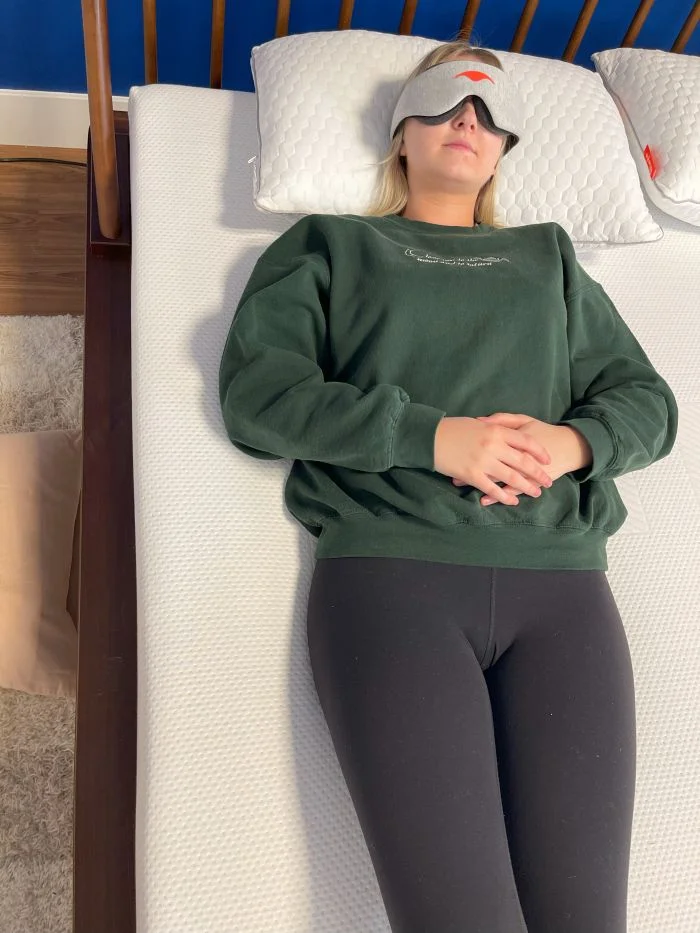

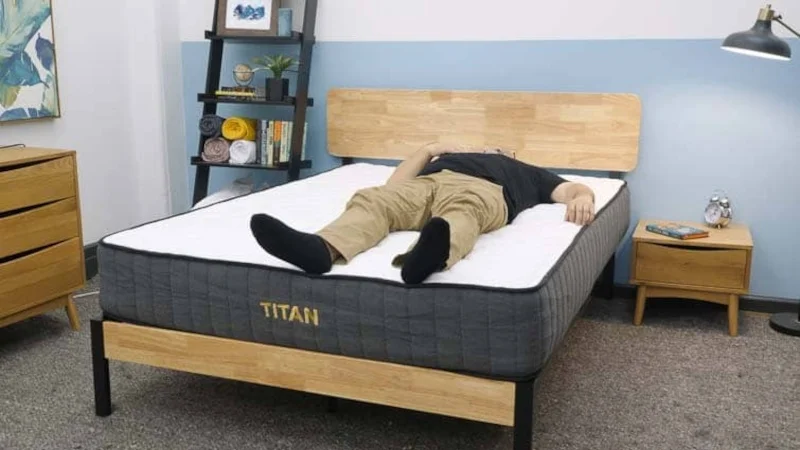
Do you dream of being a back sleeper and enjoying the benefits of back sleeping? Here are a few quick tips to help you get the positioning just right:
- Grab a firm mattress: The best mattresses for back sleepers are medium-firm to firm. This level of firmness gives you support to your hips and keeps them aligned with your shoulders, so you get all the benefits of back sleeping and none of the aches and pains.
- Use the right pillow: We find that a medium loft pillow is one of the best pillows for back sleepers because it doesn’t wrench your neck too far forward when you’re lying down.
- Place a pillow behind your knees: Alignment is the name of the game. You’ll already be doing great in that department with the right mattress, but sliding a small pillow behind your knees supports the natural curve of your spine too.
Also, while we do acknowledge that back sleeping is one of the worst sleeping positions for folks with sleep apnea, using a CPAP machine often remedies the issue completely. So, if you suspect you may have undiagnosed sleep apnea or another sleep disorder, consult your doctor or other qualified medical professional today to see if a CPAP machine is right for you.
Sleeping on Your Stomach
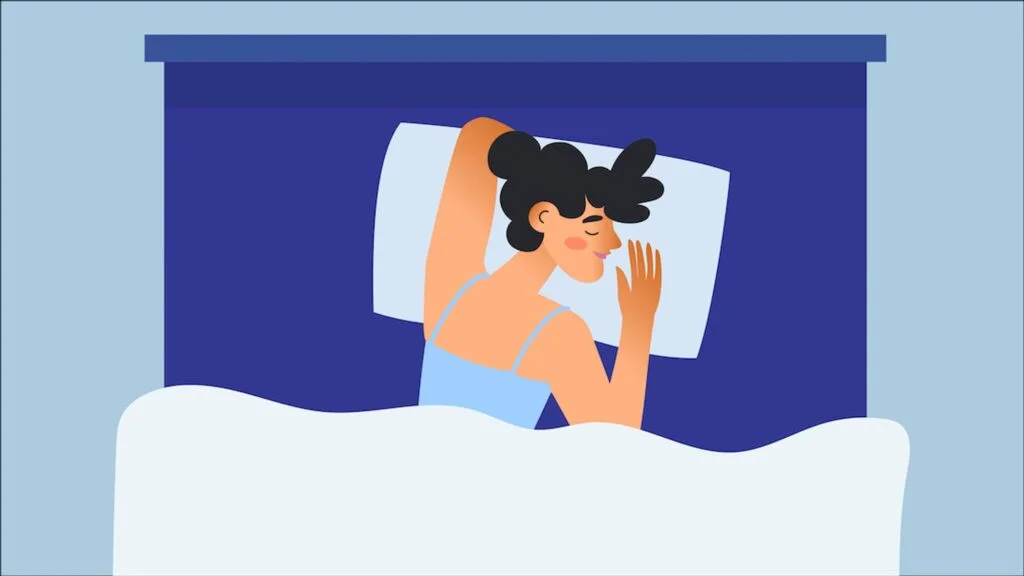
Poll everyone you know and it would be surprising if you found more than a few stomach sleepers in your midst. That’s because reportedly less than 10 percent of sleepers9 lie on their bellies when taking a snooze.
Benefits of Sleeping on Your Stomach
Sleeping on your side or back provides some ancillary benefits, but there aren’t many major benefits associated with stomach sleeping that you can’t get from one of the more popular sleeping positions.
You may reduce snoring, since stomach sleeping keeps your airways more open, but you can get this benefit from the significantly more popular side sleeping position. Plus, side sleeping promotes better spinal alignment.
Ultimately, you should only sleep on your stomach if you find it comfortable and if your doctor deems it safe considering your medical history and overall health.
Cons of Sleeping on Your Stomach
According to Lees, sleeping on your stomach is the worst sleeping position in terms of spinal health because it forces you to twist your neck to avoid accidentally smothering yourself with your pillow. This unnatural position may place undue stress on the lower back.
“It puts pressure on your muscles and joints,” says Lees, “and that can irritate your spinal nerves, leading to pain and discomfort when you wake up.”
Other groups of individuals who should avoid sleeping on their stomach include:
- Pregnant women
- People with existing back or neck pain
- People who are concerned about facial wrinkles
- People with sleep apnea or other breathing problems
How to Sleep Better on Your Stomach
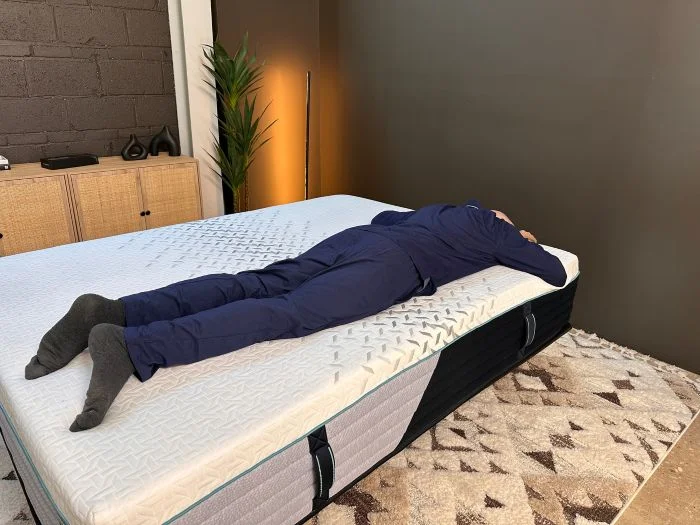
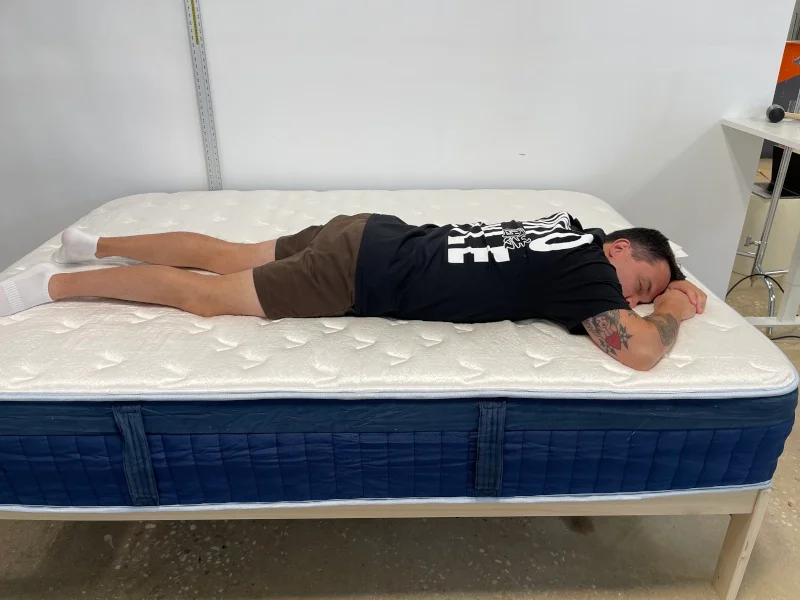

So, you’re one of those super rare stomach sleepers and you want to know how to position your body to place minimal stress on your spine. Here a few pro tips if you’re dead set on sleeping in the prone position:
- Start with the right mattress: The best mattresses for stomach sleepers tend to be firm enough to provide proper support. A firm mattress will keep your hips from drooping into the mattress and coming out of alignment with your shoulders.
- Use the right pillow: Something high loft will push your head backwards and wrench your neck out of alignment. The best pillows for stomach sleepers are usually a low loft, so everything stays nice and even.
Best Sleeping Position for Lower Back Pain
Do you suffer from low back pain?
You’re not alone: The World Health Organization11 noted that 619 million people worldwide suffered from lower back pain in 2020. That number is only poised to rise to an estimated 843 million by 2050, so adopting a sleeping position that reduces strain on your spine is crucial for keeping yourself from becoming part of that staggering statistic.
According to Lees, the best sleeping position if you’re dealing with lower back pain is—ironically enough—sleeping on your back. This position minimizes the stress on your spine, providing less pressure and possibly even a little pain relief too.
Not into back sleeping? No problem. Sleeping on your side is a worthy substitute, especially if you tuck a pillow between your knees to keep your hips, pelvis, and spine aligned.
Best Sleeping Position for Back Pain
What about if you’re suffering from regular old run-of-the-mill back pain?
In this situation, back sleeping still may provide respite and relief, but side sleeping may be the best way to go for optimal improvements to your health and well-being. Again, alignment is the name of the game, so adopting either of these two great sleeping positions may work wonders for your existing or developing back pain.
Sleeping on a medium-firm to firm mattress may be recommended in this scenario too. When in doubt, consult your healthcare provider to see what they may recommend to manage your pain.
Best Sleeping Position for Neck and Shoulder Pain
“Sleeping on your back or side, with appropriate support, will be best for individuals with neck and shoulder pain,” says Lees. “This position can reduce the pressure on the shoulder and allow the spine to relax.”
For a little extra comfort, back sleepers may consider putting a small pillow beneath their necks to reduce the strain on their neck and shoulders. Side sleepers likewise may protect their spines by shoving a supportive pillow between their head and mattress, as well as a pillow between their knees too.
Best Sleeping Position for Sleep Apnea
“Sleep apnea can occur when the muscles around the jaw and throat relax, allowing the jaw to drop and constrict the airway,” says Lees. “Sleeping on your side helps to keep the head and spine aligned, reducing the risk of airway obstruction.”
Stomach sleeping serves as a viable option if you need a position that keeps your airways open. It may provide some relief from snoring and other symptoms of sleep apnea, but the best way to really reduce or eliminate sleep apnea symptoms is by completing a sleep study with a qualified healthcare provider.
Best Sleeping Position for Hip Pain
Trying to sleep with hip pain can be a challenge, but getting into the ideal position may reduce the intensity of your pain and subsequently reduce the number of times you wake up in the middle of the night.
More restful sleep is always a major plus, so, according to Lees, you’ll probably want to sleep on your back with your knees slightly elevated if you’re working around hip pain. If your pain is especially severe, side sleeping is an option as well, assuming you’re sleeping on the side that doesn’t hurt, and you insert a pillow between your knees to reduce pressure on your hips.
Don’t be afraid to consult your doctor if the pain is really bad. Adjusting your sleeping position is an easy and inexpensive way to promote greater overall health and wellness, but serious pain may indicate an undiagnosed injury or health condition that requires the advice of a real medical professional.
FAQs
What is the healthiest sleeping position?
The healthiest sleeping position is the one that helps you fall asleep quickly, stay asleep, and wake up feeling refreshed. Generally, that will be back sleeping or side sleeping, but stomach sleepers are out there and it’s not necessarily the worst sleeping position just because it’s less popular.
What is the best sleeping position if you’re pregnant?
For the first 20 weeks of pregnancy, you’re probably fine to sleep any which way you please.
However, doctors generally recommend that pregnant patients stop sleeping on their backs and stomachs between 20 and 28 weeks of pregnancy, which makes side sleeping the best and only option at that time.
Is it bad to sleep on your stomach?
Not necessarily.
Sleeping on your stomach may strain your neck and/or spine, but some people sleep on their stomach anyway and wake up feeling fine. If that’s you, you should by all means continue to do what feels comfortable. When in doubt, ask your doctor.
What is the best side to sleep on for your heart?
According to Swiss Medical Weekly12, sleeping on your right side “results in a lower sympathetic tone than lying on the left side and is beneficial in patients with heart failure or after an infarction without bradycardia.”
Put simply, sleeping on your right side reduces the load on your heart, which is great in general but especially great if you’re managing a heart condition or cardiovascular disease.
The Last Word From Sleepopolis
You know us. We dissect every morsel of information so you get the best sleep medicine and science facts you can get anywhere. So, if you’re trying to finetune your sleep habits and aim to get the best, most restful sleep possible, we’re recommending sleeping on your side or back.
That said, you should always do what feels most comfortable to you and always clear decisions that pertain to your health with your doctor before you flip the script and totally revolutionize the way you’ve been sleeping your whole life.
What’s best for one sleeper may not be best for you, so remember to always listen to your body, always consult your doctor, and always stop back at Sleepopolis for all your pressing sleep questions.
Sources
- Saini Y, Rai A, Sen S. Relationship Between Sleep Posture and Low Back Pain: A Systematic Review. Musculoskeletal Care. 2025;23(2):e70114. doi:10.1002/msc.70114
- Nakano H, Ikeda T, Hayashi M, Ohshima E, Onizuka A. Effects of body position on snoring in apneic and nonapneic snorers. Sleep. 2003;26(2):169-172. doi:10.1093/sleep/26.2.169
- Cary D, Briffa K, McKenna L. Identifying relationships between sleep posture and non-specific spinal symptoms in adults: A scoping review. BMJ Open. 2019;9(6):e027633. Published 2019 Jun 28. doi:10.1136/bmjopen-2018-027633
- Braver HM, Block AJ, Perri MG. Treatment for snoring. Combined weight loss, sleeping on side, and nasal spray. Chest. 1995;107(5):1283-1288. doi:10.1378/chest.107.5.1283
- Kember AJ, Gilad N, Hobson SR. Sleeping posture in pregnancy. CMAJ. 2025;197(23):E645. Published 2025 Jun 15. doi:10.1503/cmaj.241858
- Simadibrata DM, Lesmana E, Amangku BR, Wardoyo MP, Simadibrata M. Left lateral decubitus sleeping position is associated with improved gastroesophageal reflux disease symptoms: A systematic review and meta-analysis. World J Clin Cases. 2023;11(30):7329-7336. doi:10.12998/wjcc.v11.i30.7329
- Richards DP, Miller DL, MacDonald ED, Stewart QF, Miller SD. Rotator Cuff Tears Are Related to the Side Sleeping Position. Arthrosc Sports Med Rehabil. 2024;6(2):100886. Published 2024 Feb 2. doi:10.1016/j.asmr.2024.100886
- Swift A, Liew S, Weinkle S, Garcia JK, Silberberg MB. The Facial Aging Process From the “Inside Out”. Aesthet Surg J. 2021;41(10):1107-1119. doi:10.1093/asj/sjaa339
- Skarpsno ES, Mork PJ, Nilsen TIL, Holtermann A. Sleep positions and nocturnal body movements based on free-living accelerometer recordings: association with demographics, lifestyle, and insomnia symptoms. Nat Sci Sleep. 2017;9:267-275. Published 2017 Nov 1. doi:10.2147/NSS.S145777
- Albarqouni L, Moynihan R, Clark J, Scott AM, Duggan A, Del Mar C. Head of bed elevation to relieve gastroesophageal reflux symptoms: a systematic review. BMC Fam Pract. 2021;22(1):24. Published 2021 Jan 19. doi:10.1186/s12875-021-01369-0
- Low Back Pain. World Health Organization. Accessed August 20, 2025. https://www.who.int/news-room/fact-sheets/detail/low-back-pain.
- Martin-Du Pan RC, Benoit R, Girardier L. The role of body position and gravity in the symptoms and treatment of various medical diseases. Swiss Med Wkly. 2004;134(37-38):543-551. doi:10.4414/smw.2004.09765

























